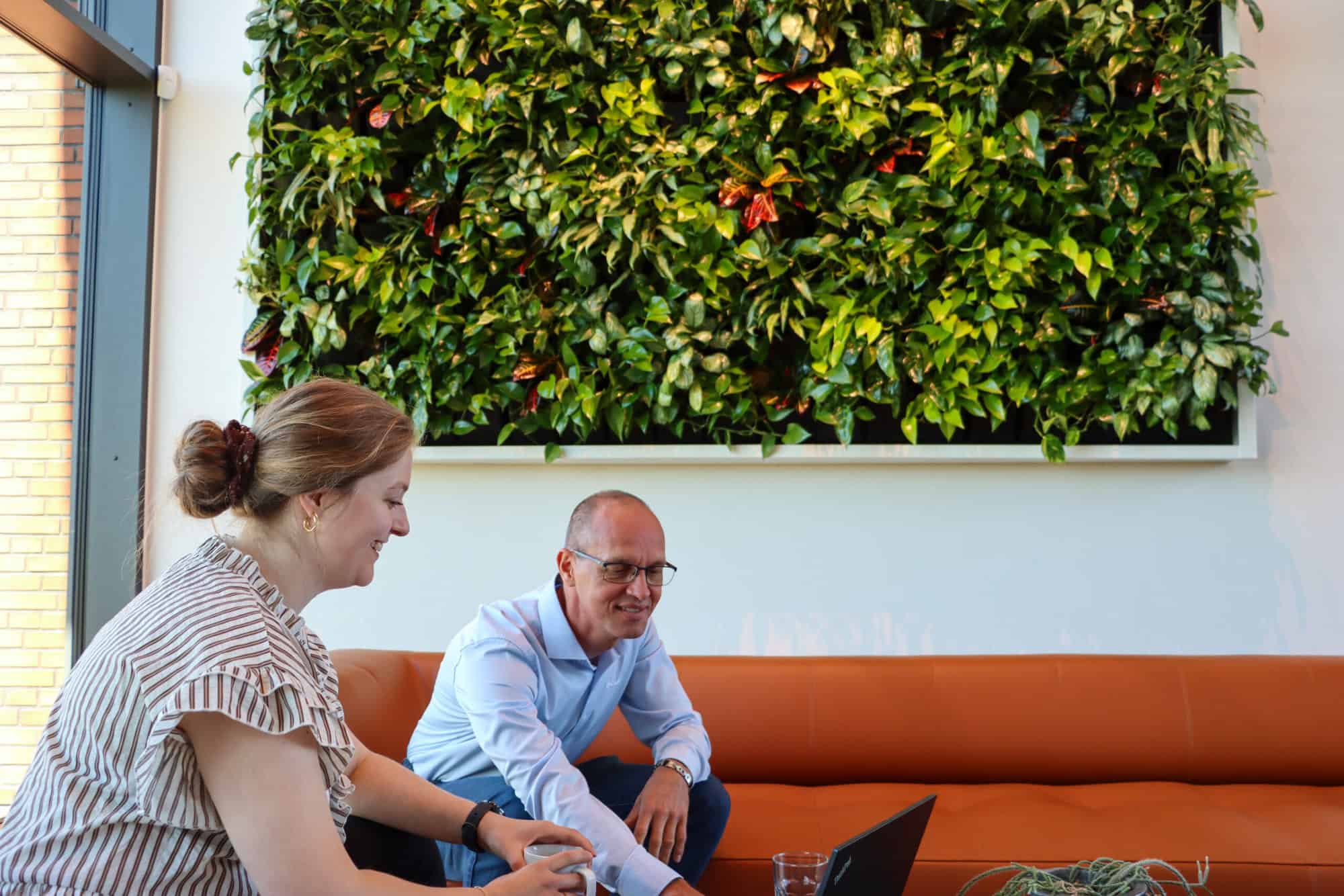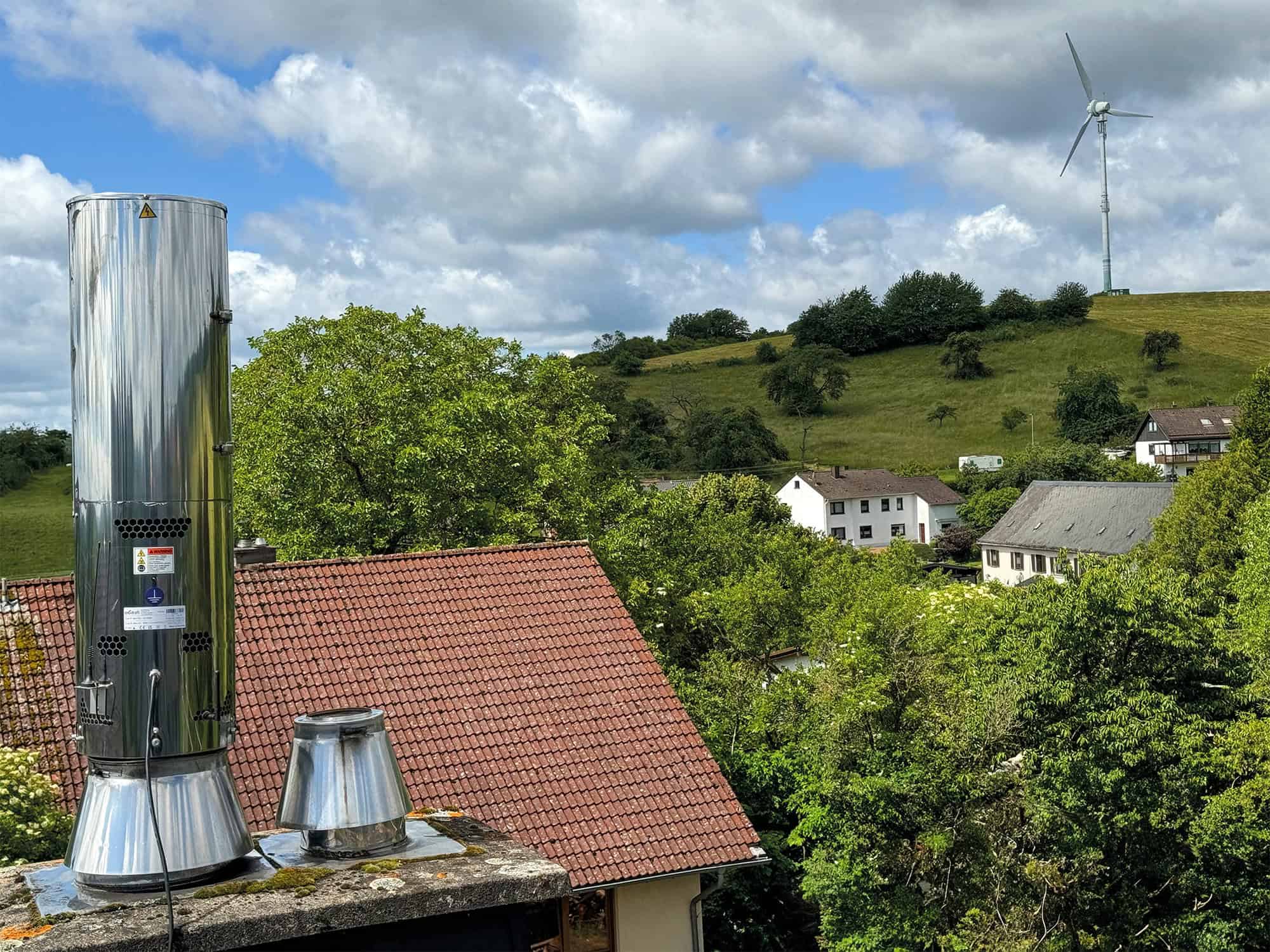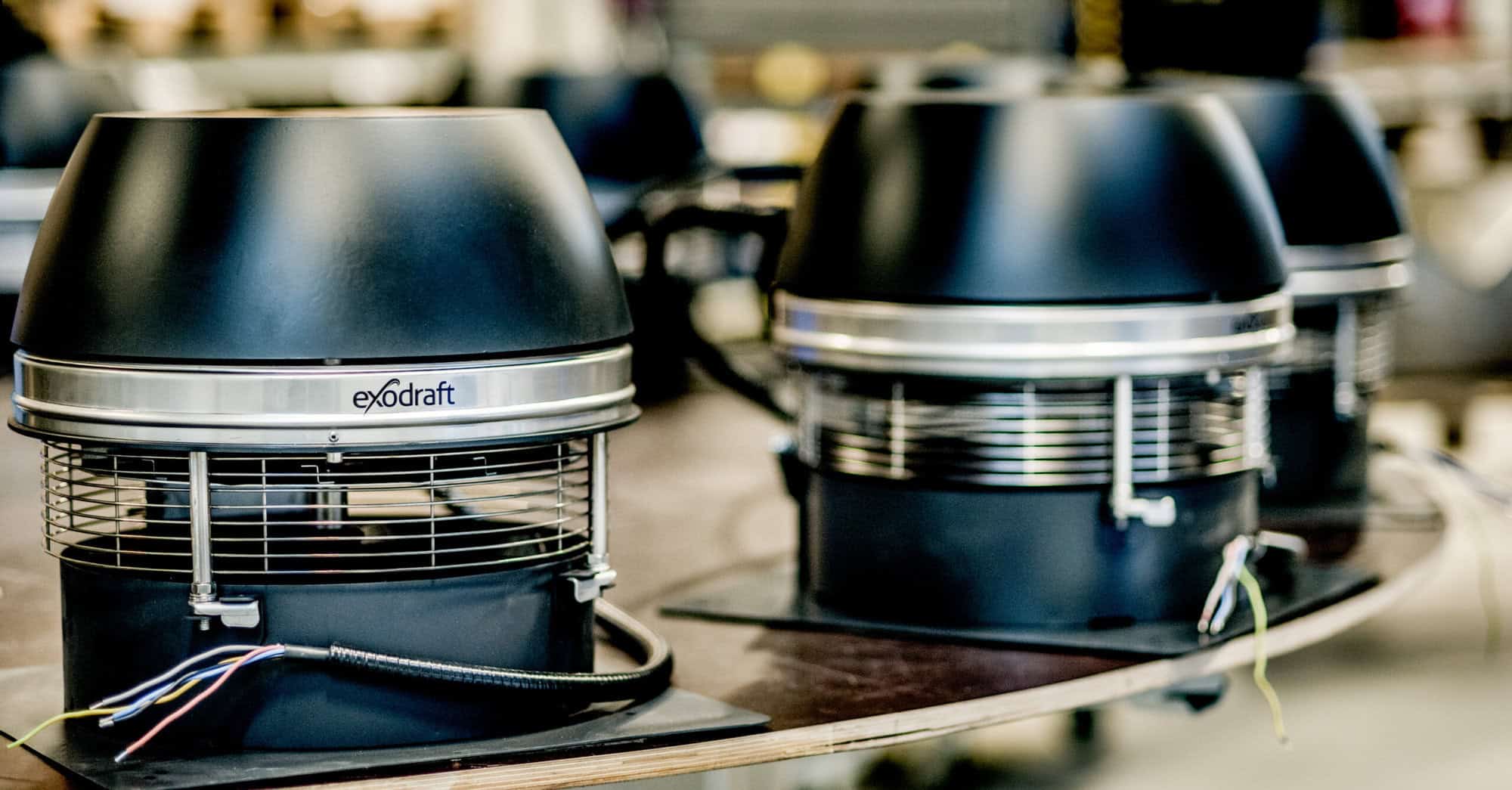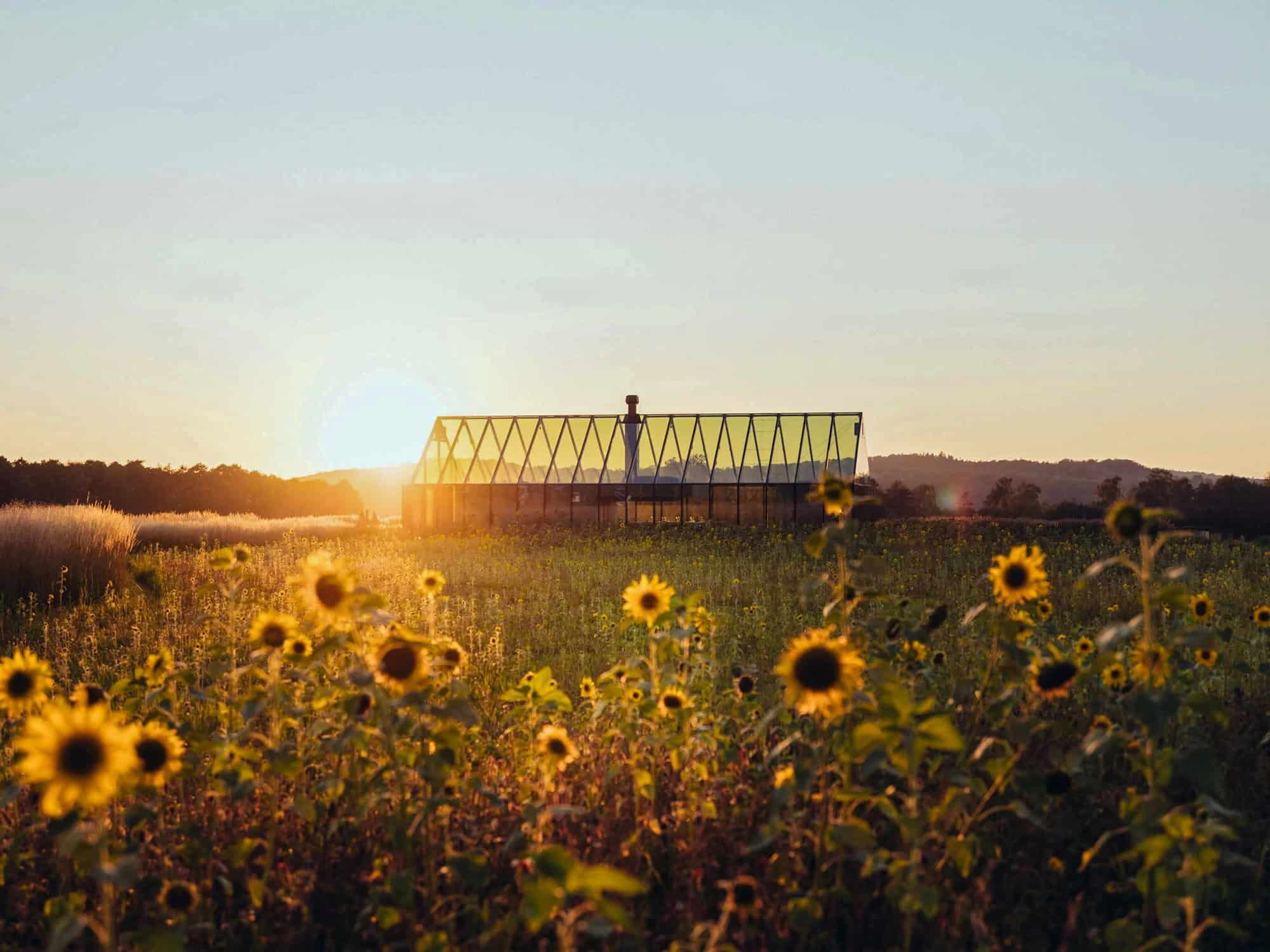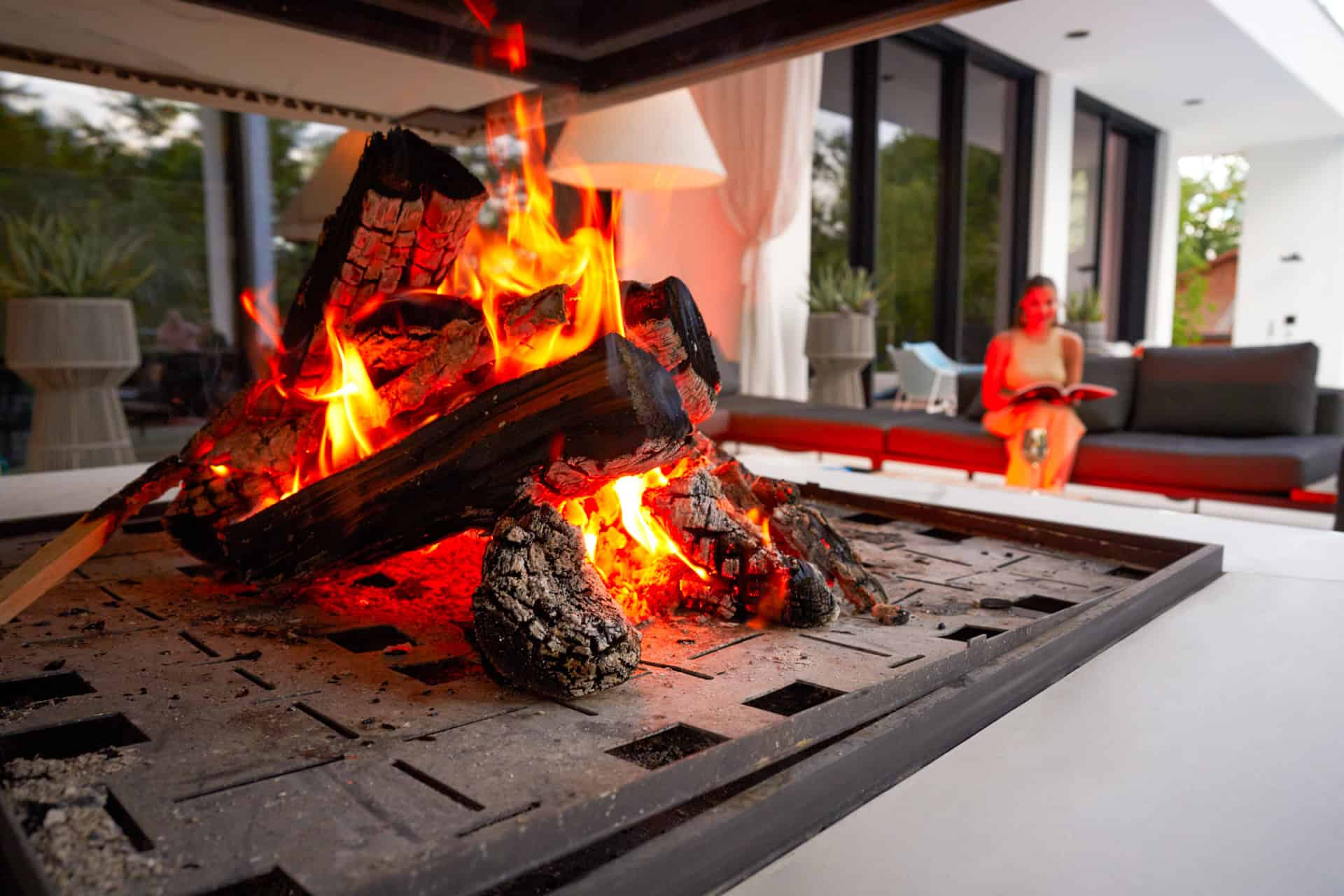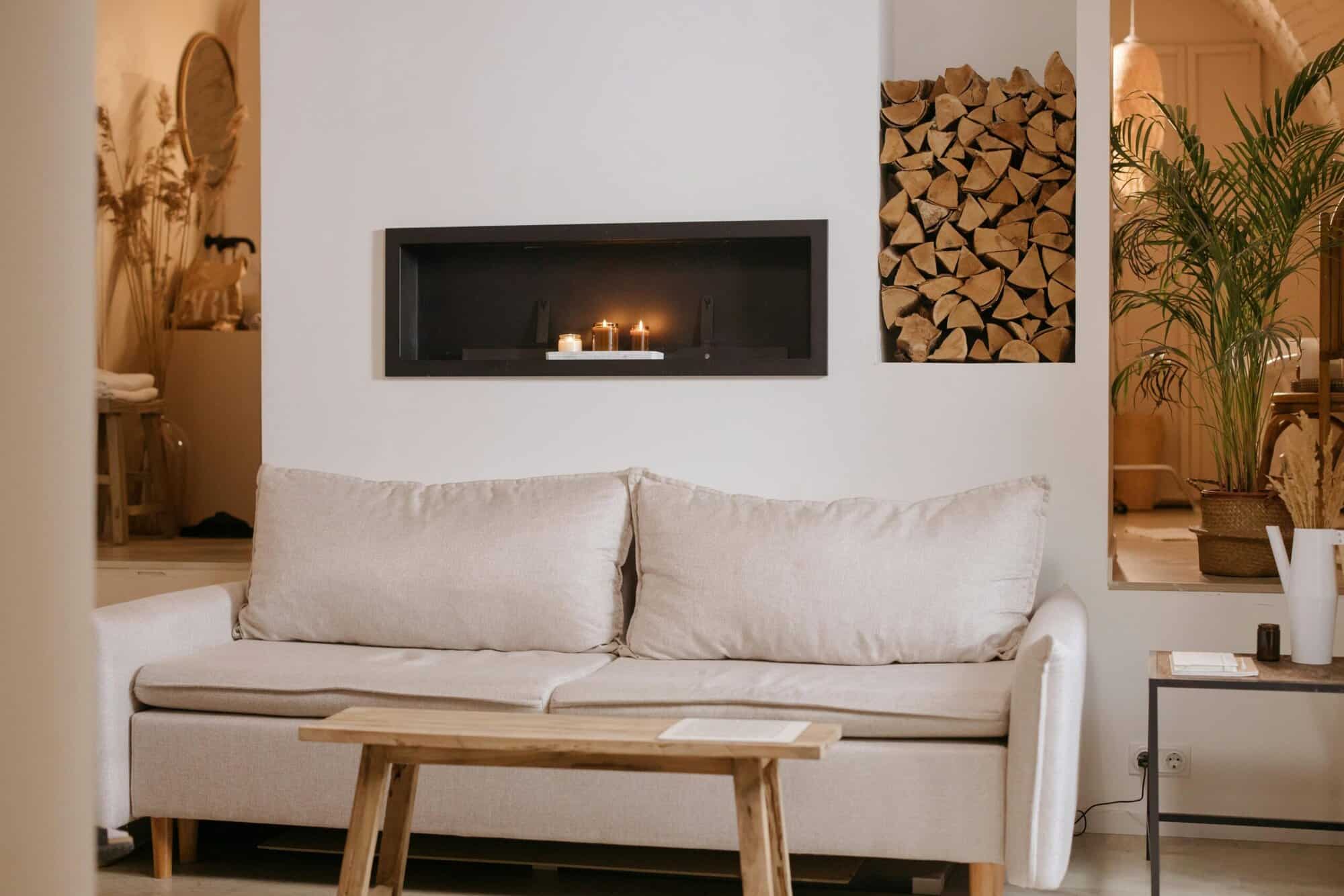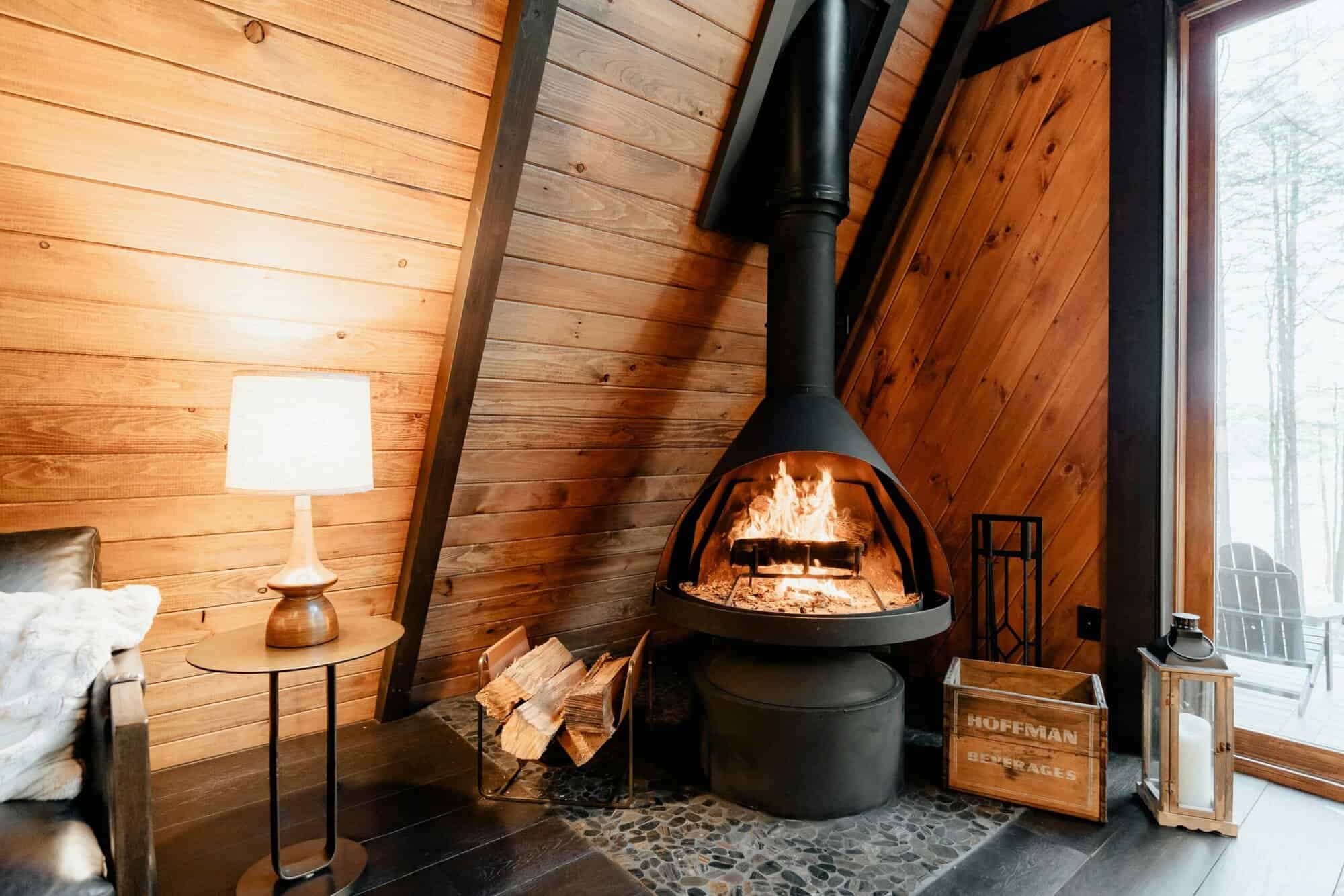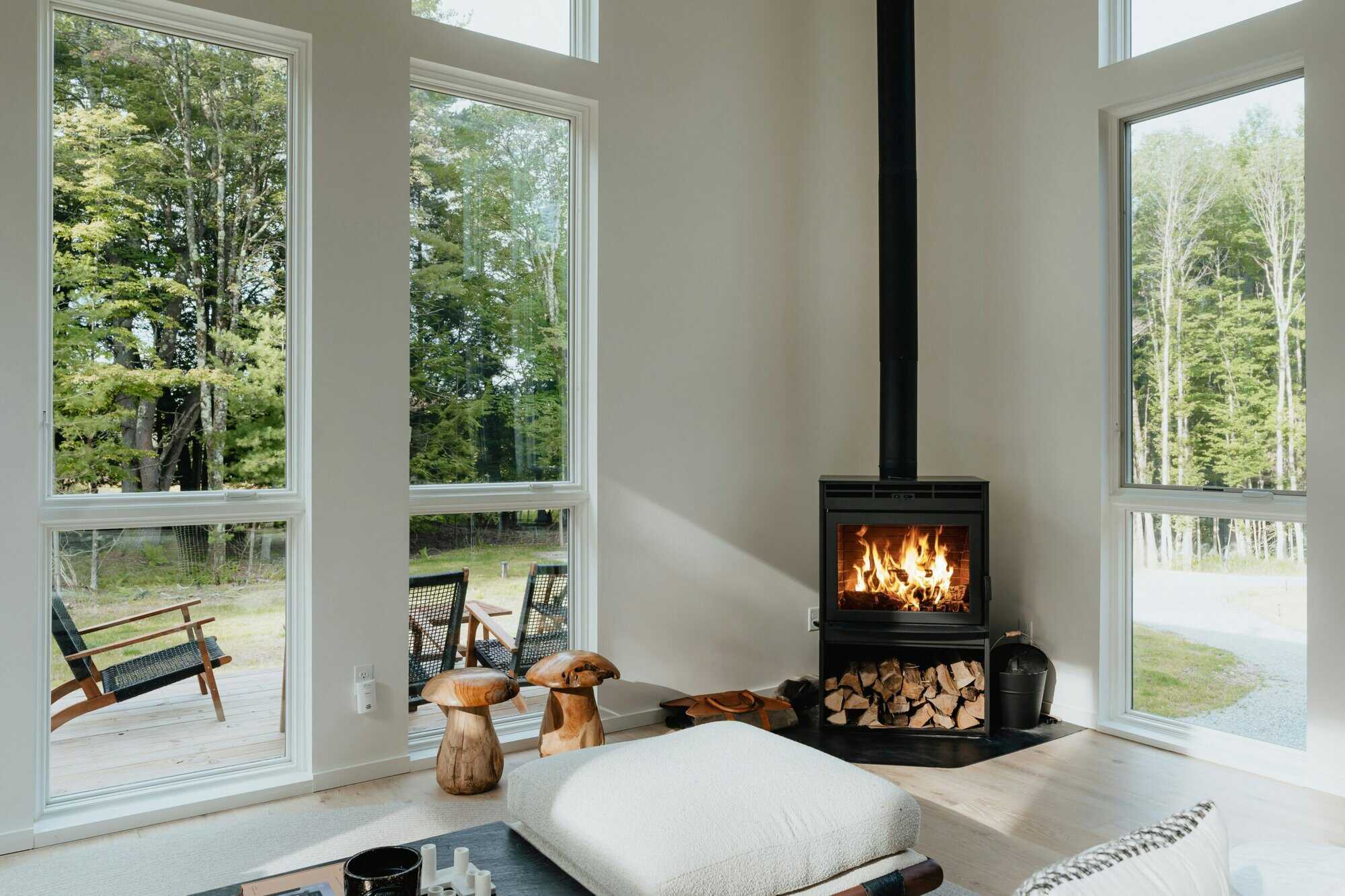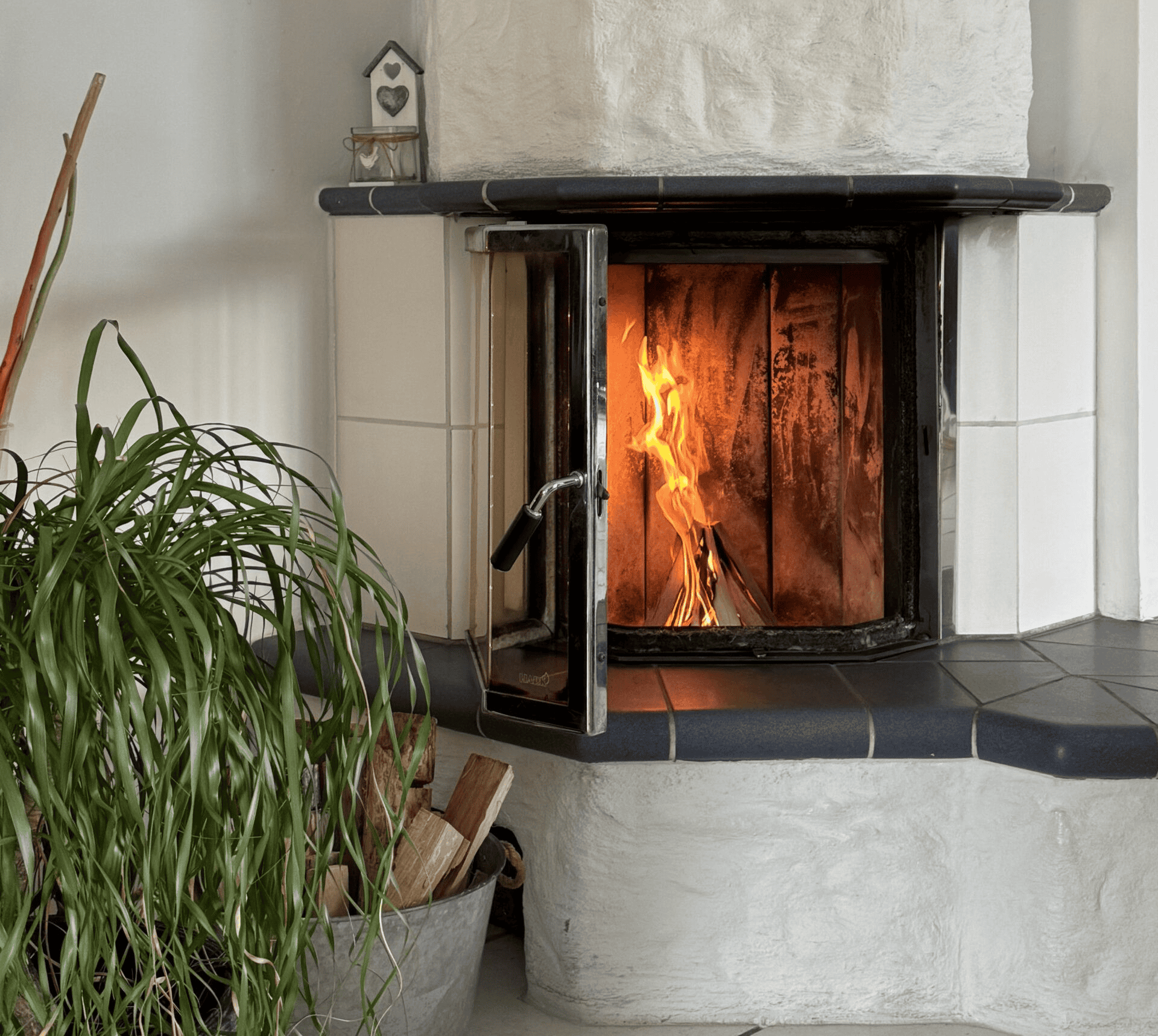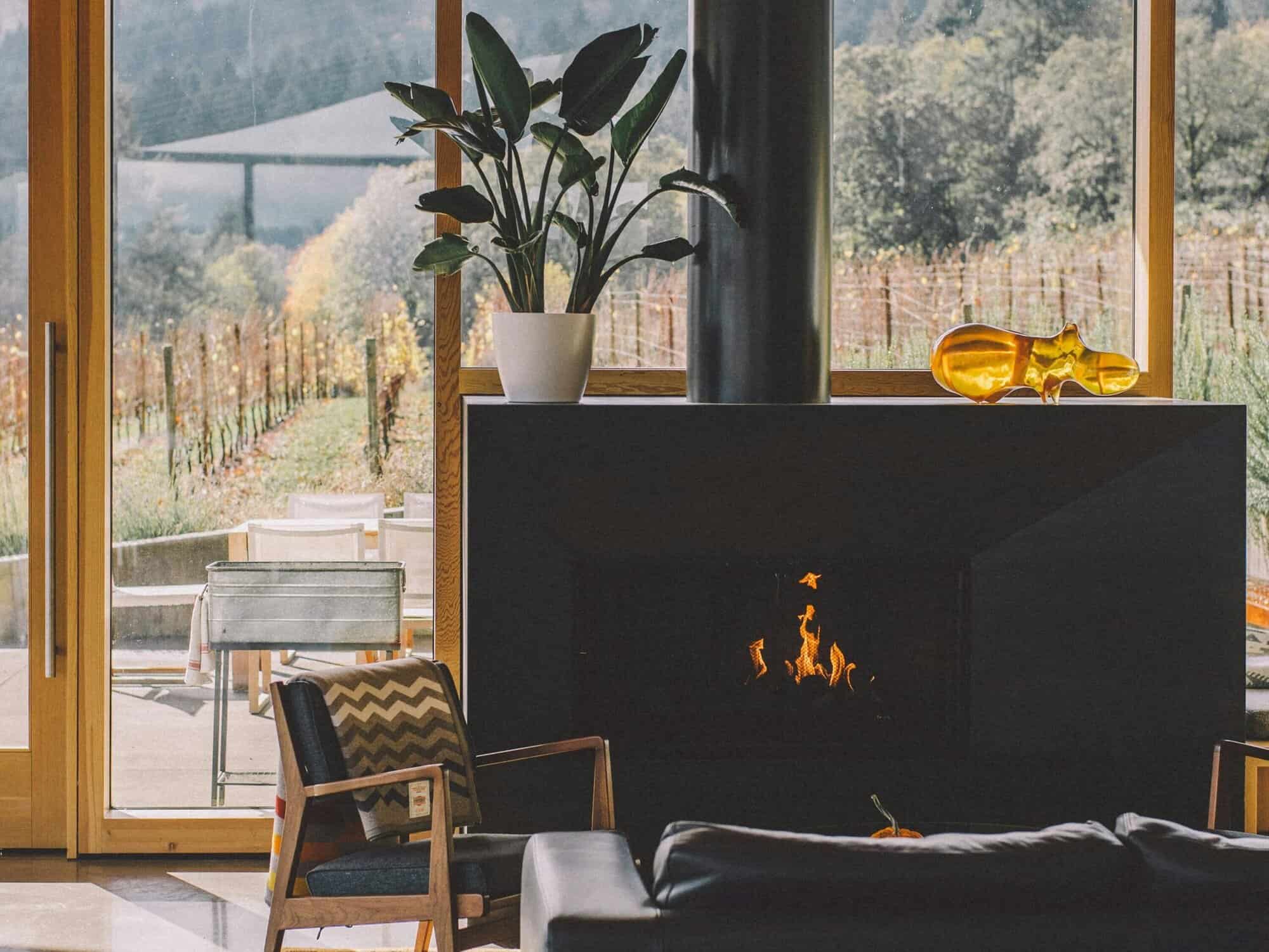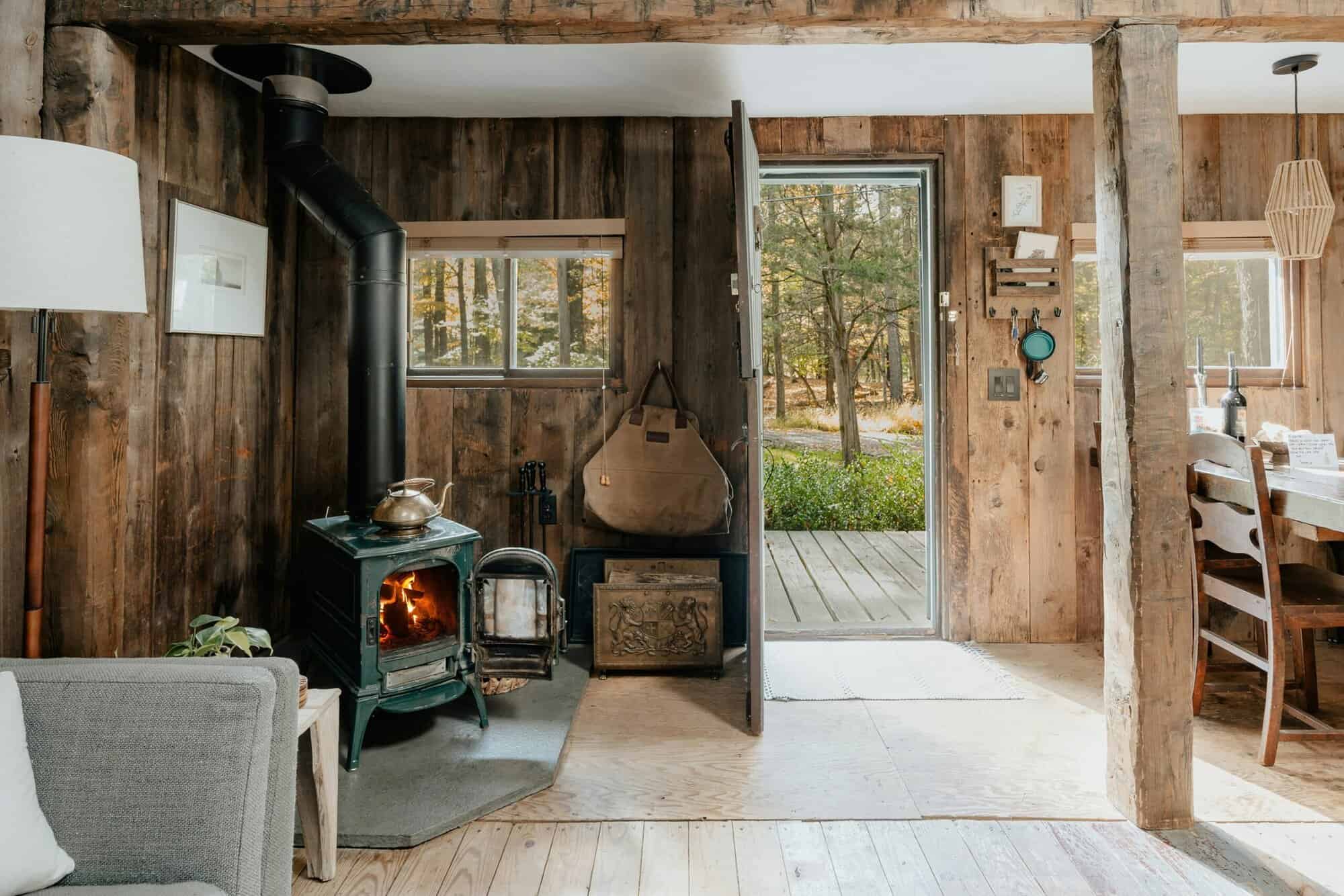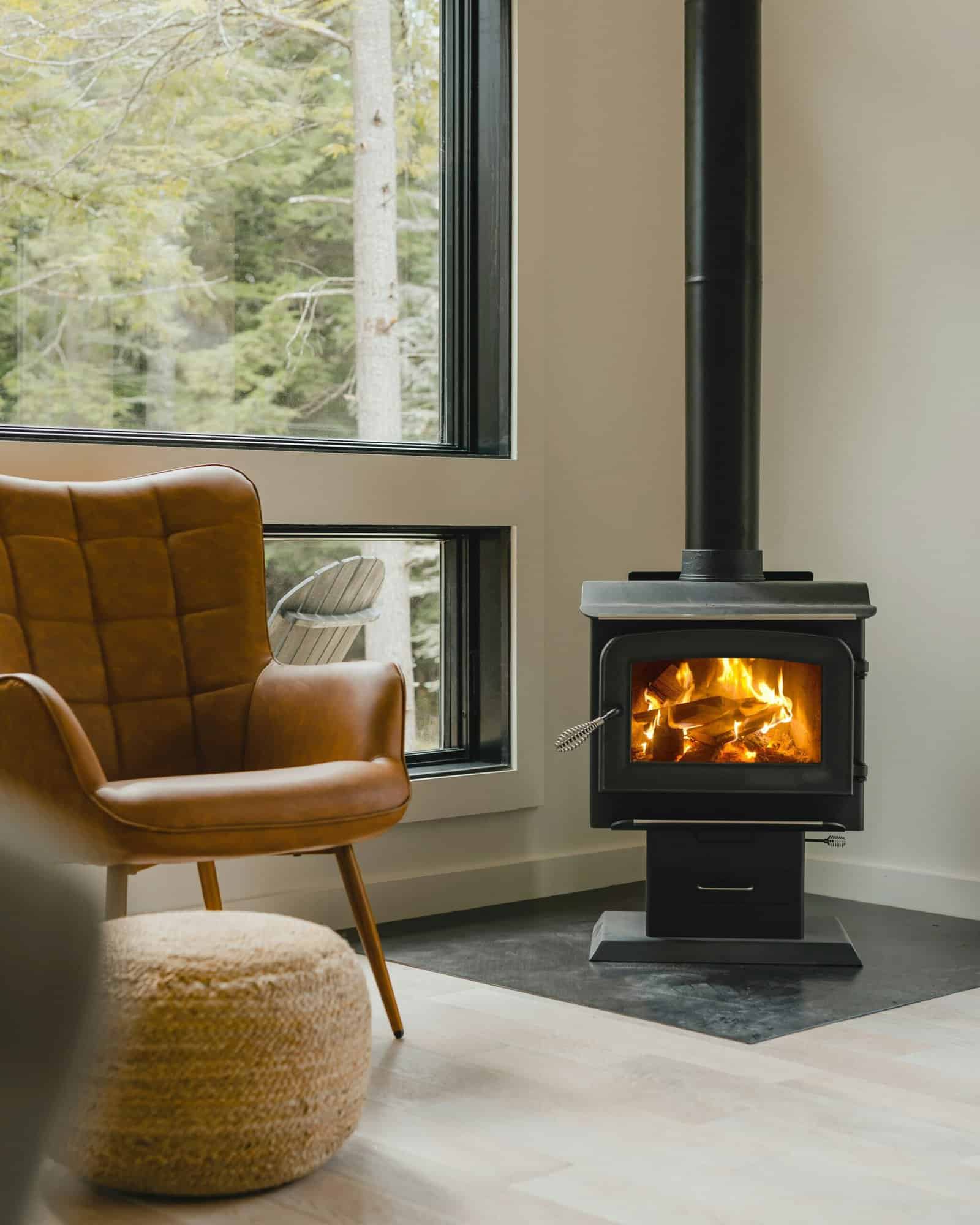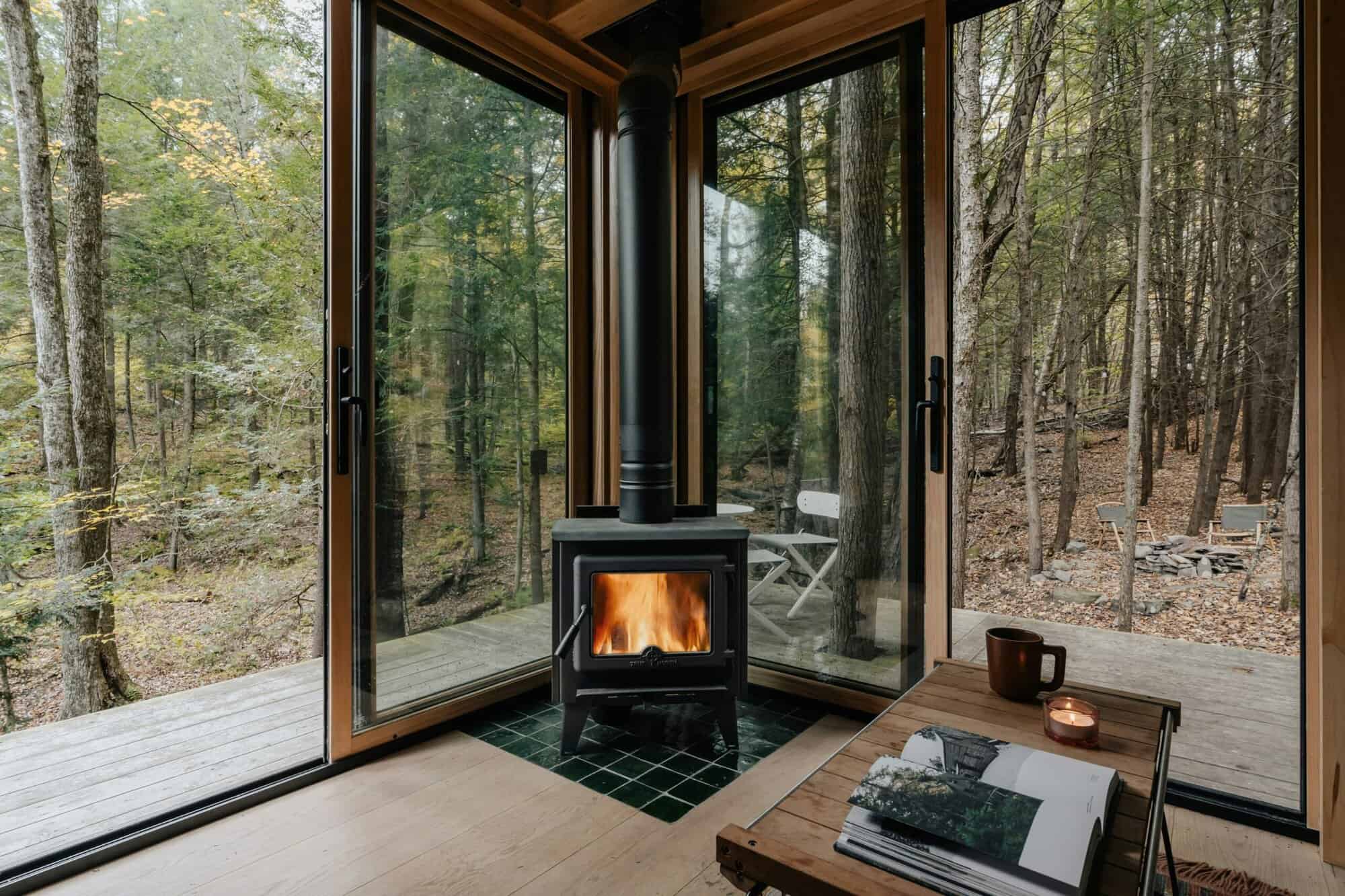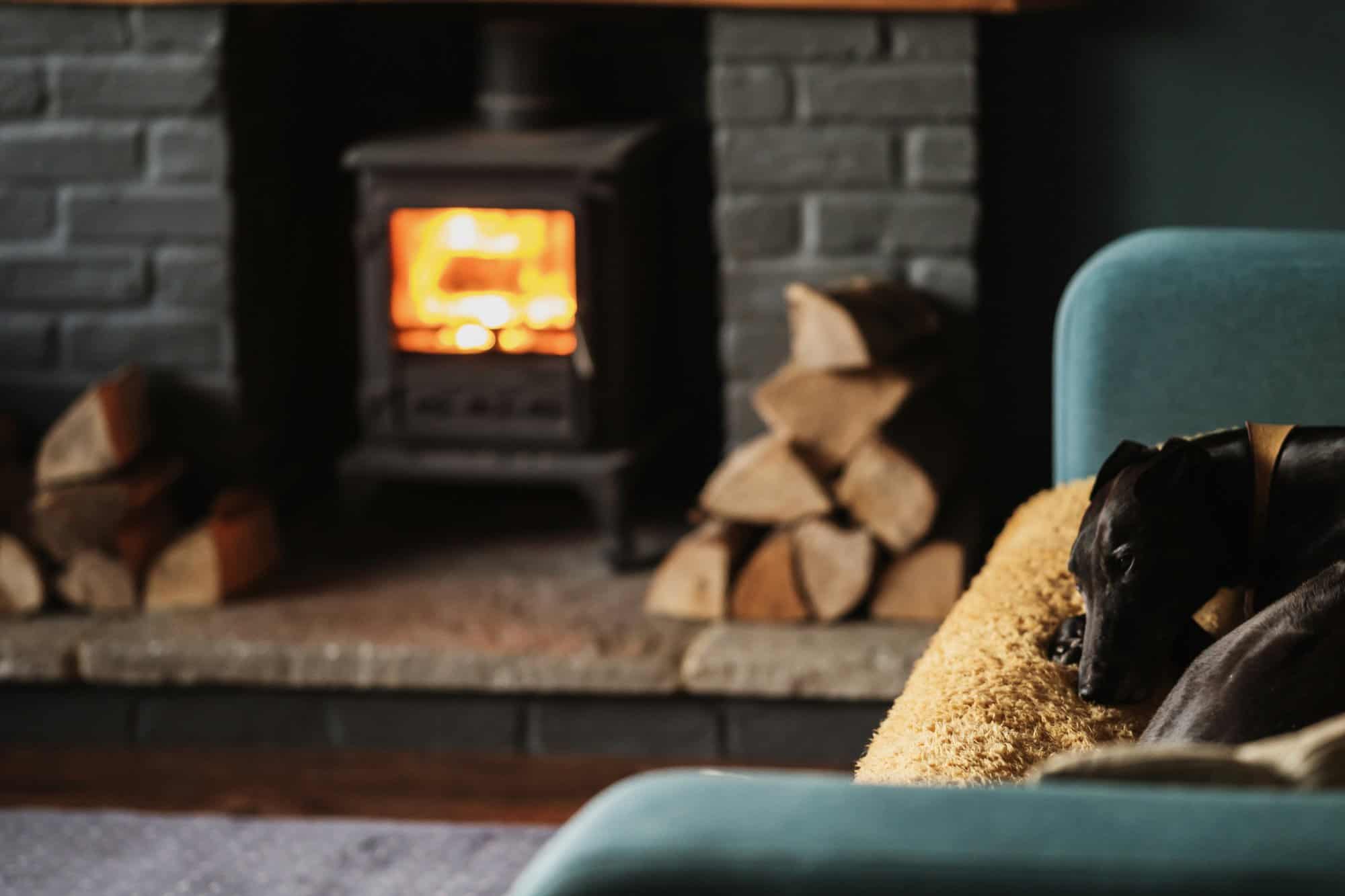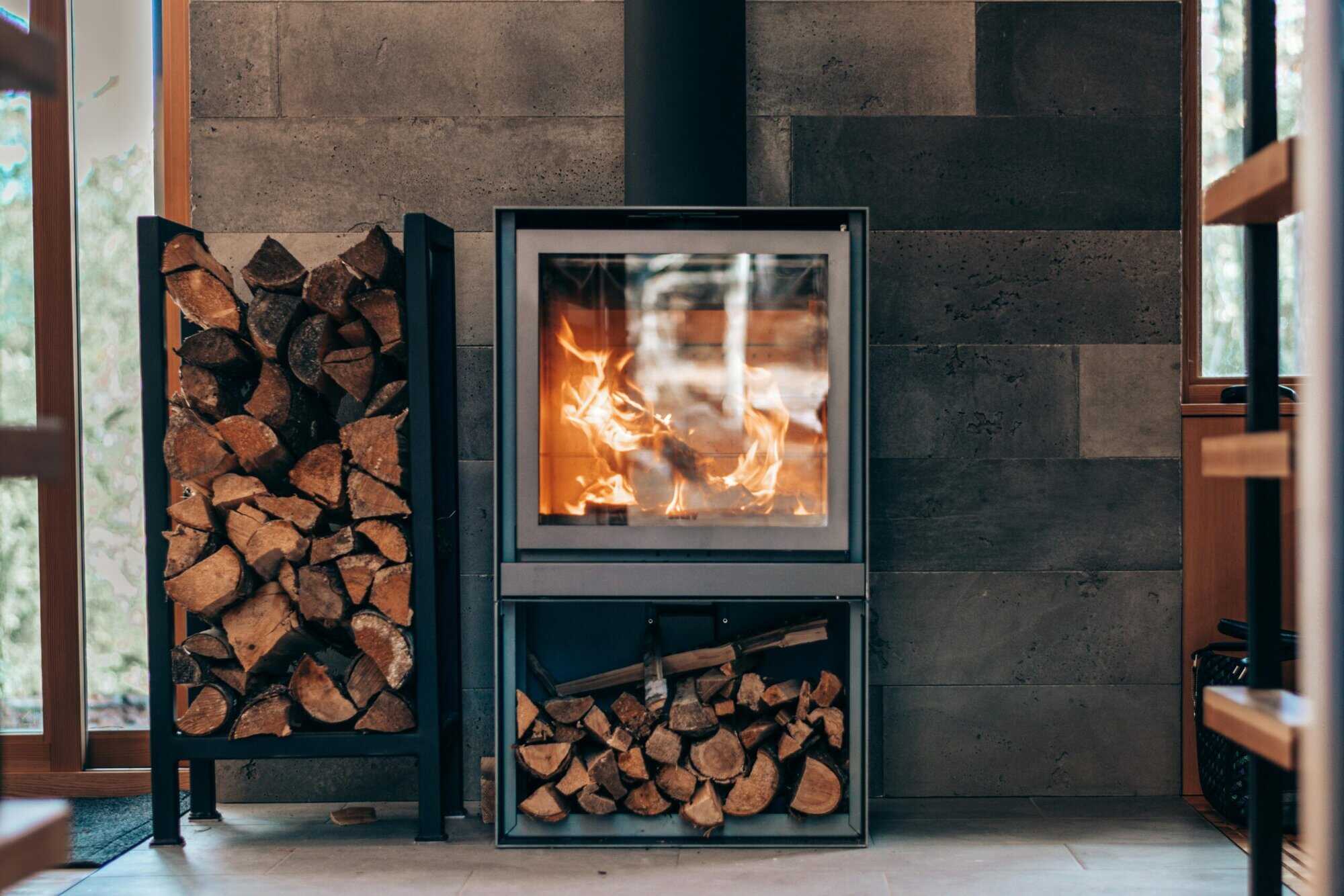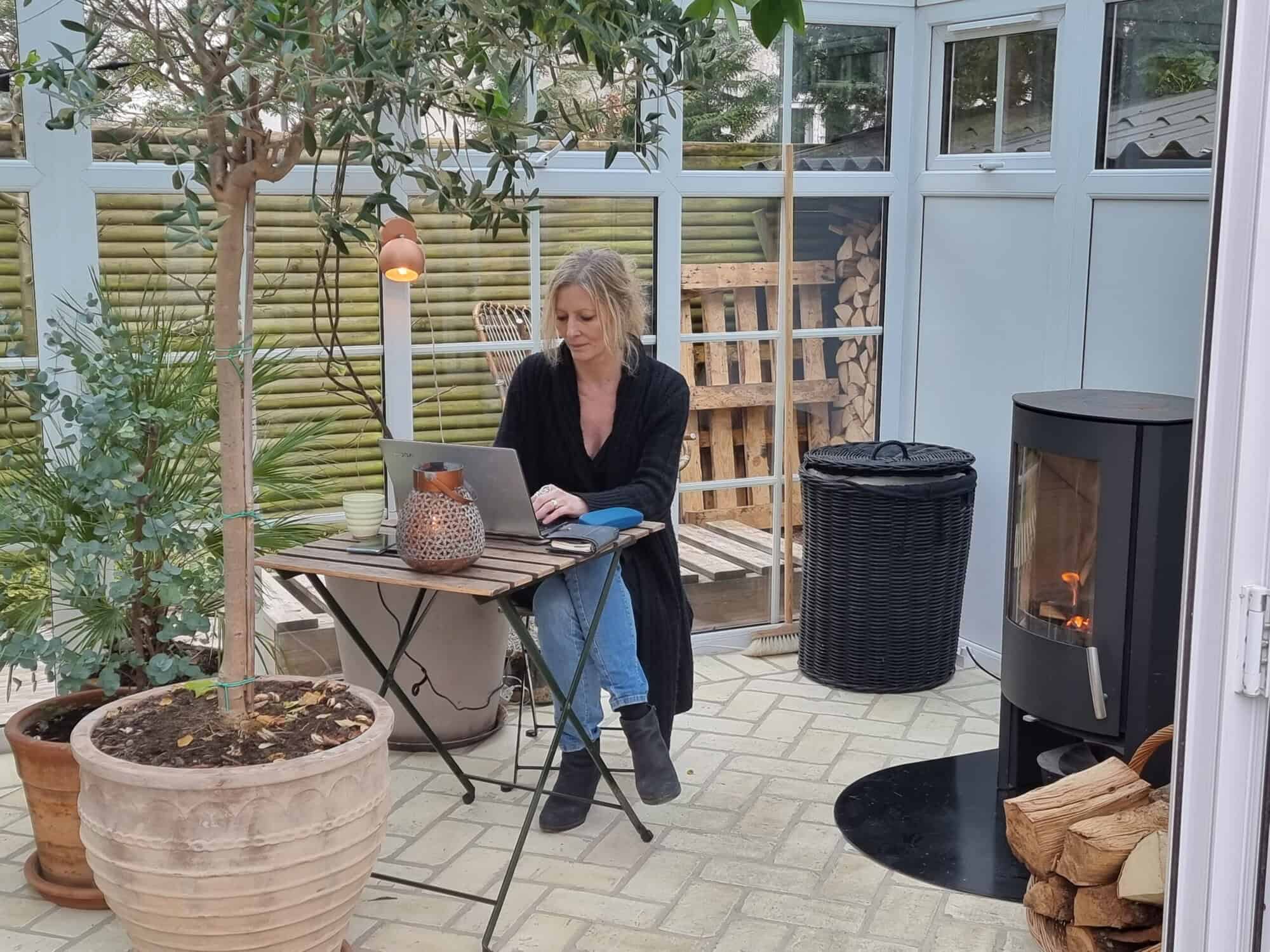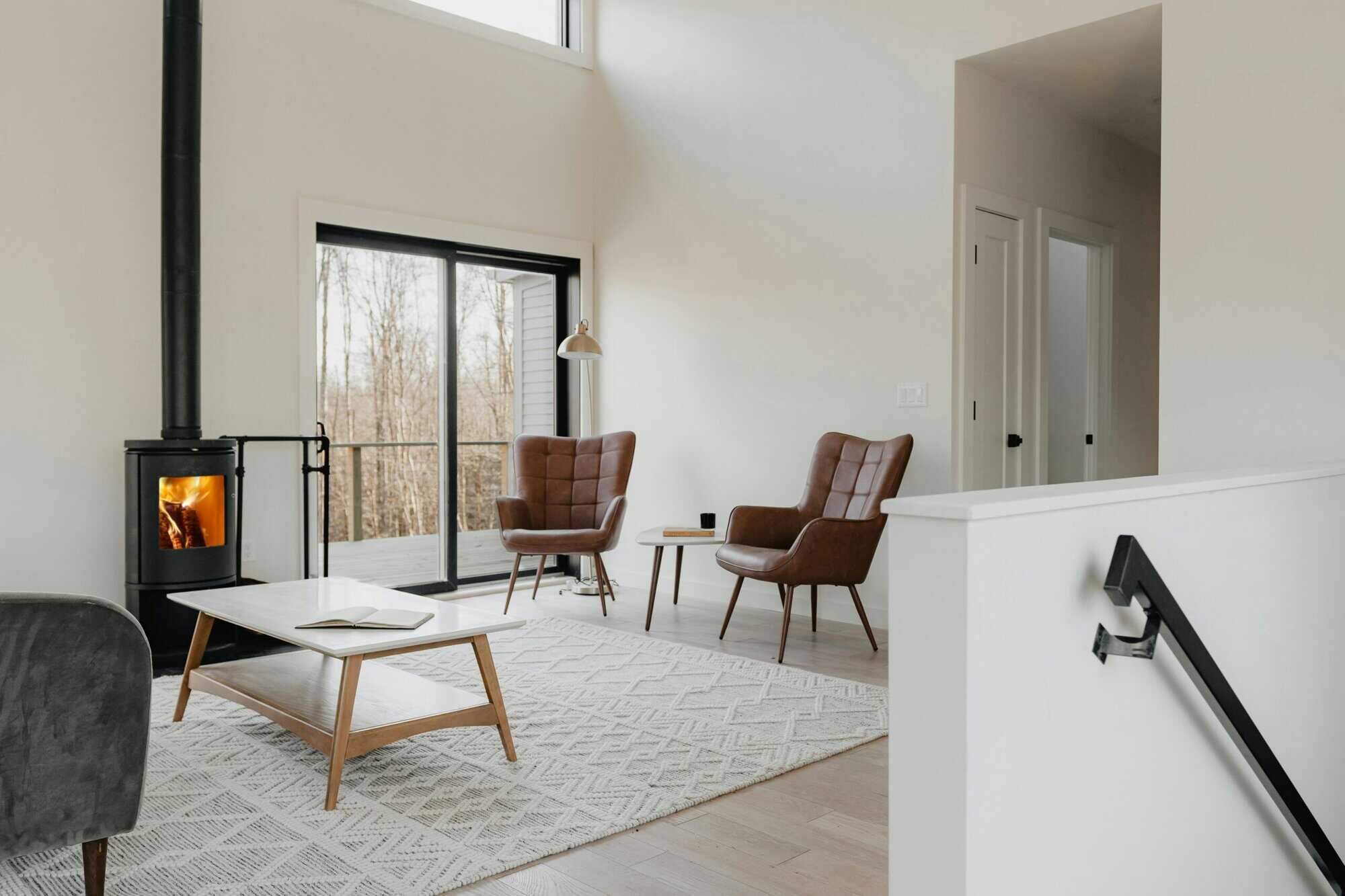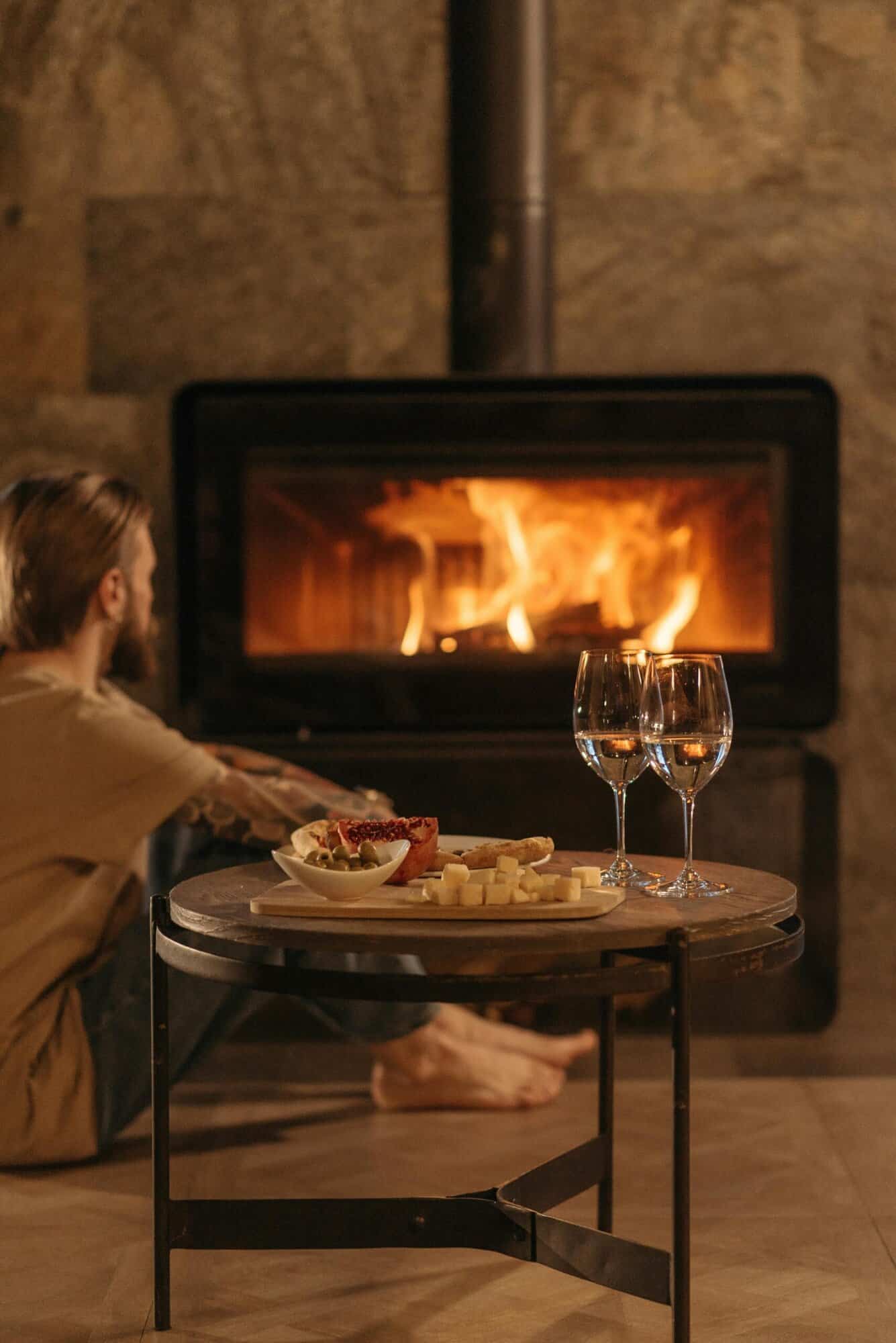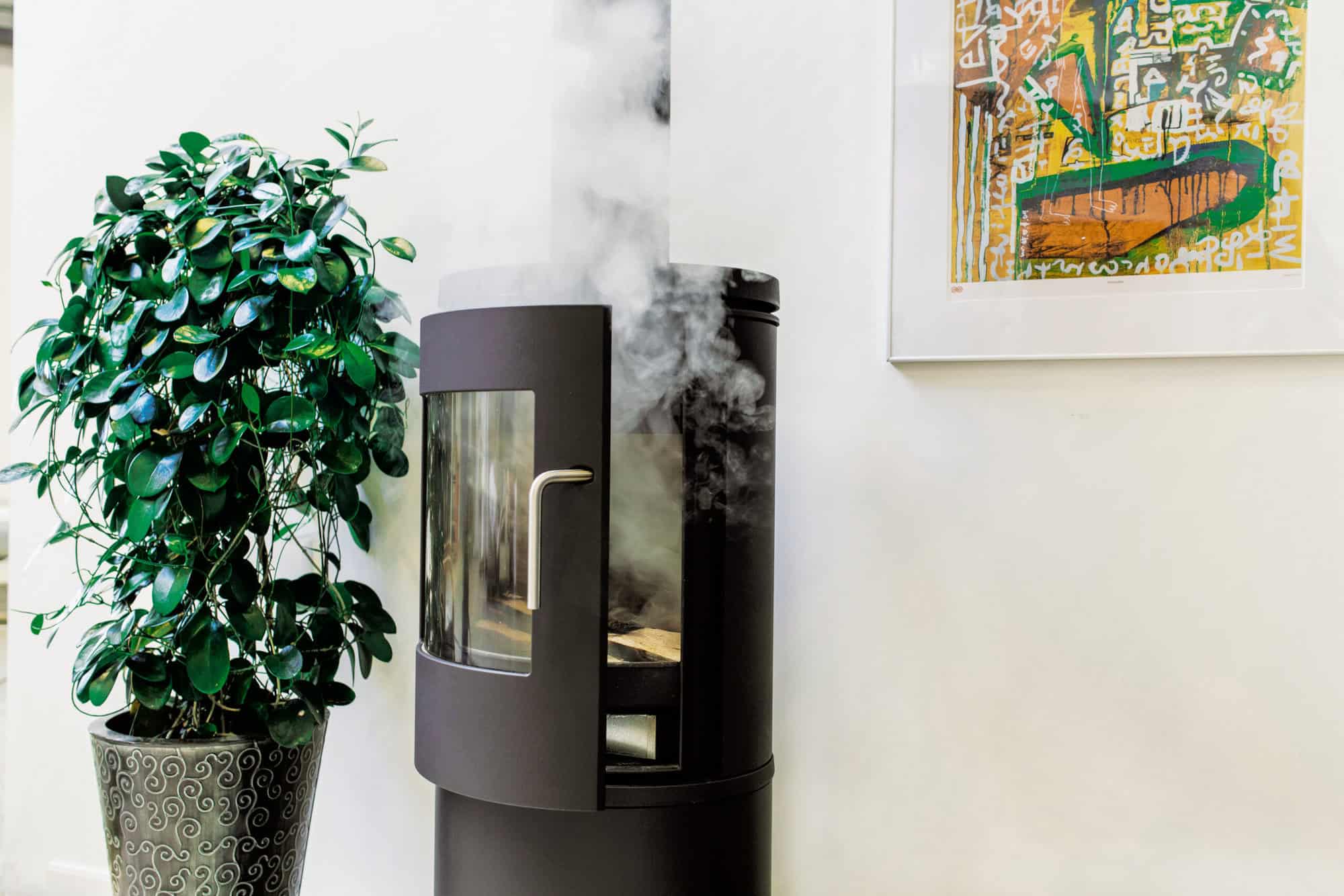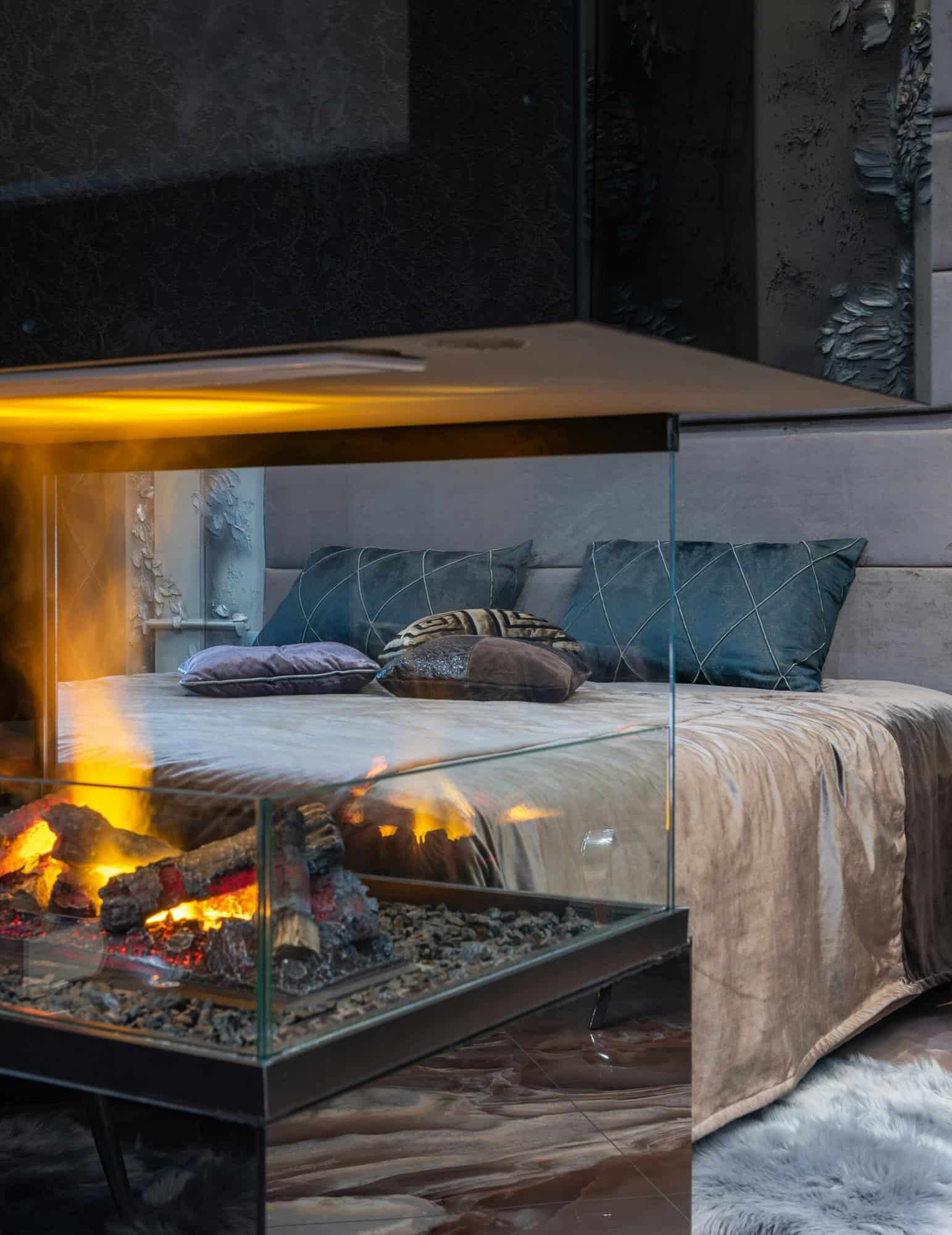Article
26. juni 2025 · 7 min
Should I Get Rid of My Wood Burning Stove?
Thinking of removing your wood-burning stove? Discover why upgrading with filters, Ecodesign stoves, or a chimney fan is a smarter, cleaner alternative that keeps the warmth without compromising on health or regulations.

Wood-burning stoves have long been a popular heating choice, offering warmth, energy independence, and a cosy atmosphere. However, recent concerns about air pollution, health risks, and changing regulations have led many homeowners to question whether they should remove their stove altogether.
With increasing emission restrictions and discussions about potential bans on wood burners, it’s understandable why some people are uncertain about the future of their stove. But does removing it make sense, or are there better alternatives that allow you to continue using your stove while reducing its environmental impact?
In this article, we’ll explore the real impact of wood-burning stoves, separate myths from facts, and show how upgrading your system with modern solutions can be a better option than removing it altogether.
Why Are People Considering Removing Their Wood Stoves?
Many homeowners are questioning whether they should get rid of their wood-burning stove due to growing concerns about regulations, health impacts, and environmental effects. But are these concerns valid, and do they justify removing a stove entirely?
Stricter Regulations and Potential Bans
In some areas, particularly in urban and smoke control zones, new emission standards are making it harder to use older wood stoves legally.
- The Ecodesign 2022 regulations have set stricter limits on particulate emissions and efficiency.
- Some regions are considering further restrictions on high-pollution stoves, but an outright ban is unlikely.
- Many older stoves no longer meet current environmental standards and could require upgrades to remain compliant.
Health Concerns and Indoor Air Quality
There is increasing awareness about the health risks of fine particulate pollution (PM2.5), which can be emitted from inefficient wood stoves.
- Poorly maintained or outdated stoves can release excess smoke and harmful pollutants into the air.
- Homes with poor ventilation may experience a buildup of particulates, affecting indoor air quality.
- Some homeowners worry about long-term exposure risks, particularly for people with asthma or respiratory conditions.
Environmental Impact and Carbon Footprint
Wood burning is often debated in terms of sustainability. While wood is a renewable resource, inefficient burning can contribute to higher emissions.
- Older stoves produce more soot and creosote, increasing environmental impact.
- Some argue that switching to alternative heating sources like heat pumps may be more sustainable in the long run.
- However, modern stoves and upgrades can drastically reduce emissions, making them a viable heating option.
While these concerns are valid, removing a wood stove is not the only option. In the next section, we’ll explore practical solutions that allow homeowners to keep their stoves while improving efficiency and reducing environmental impact.
Are Wood Stoves Really Bad for Air Quality and Health?
One of the biggest concerns about wood-burning stoves is their impact on air quality, both indoors and outdoors. While it’s true that inefficient burning can contribute to particulate pollution, modern technology has significantly reduced emissions from newer stoves.
The Impact of Particulate Emissions
The primary concern with wood-burning stoves is the release of fine particulate matter (PM2.5 and PM10), which can be harmful when inhaled.
- Older stoves and open fireplaces release higher levels of smoke and unburnt particles.
- If a stove is used incorrectly (e.g., burning wet wood), it produces more soot and creosote, leading to higher emissions.
- Proper combustion and efficient air control significantly reduce pollution.
Indoor vs. Outdoor Air Quality
- Poorly ventilated homes may see increased particulate levels, particularly if the stove is old or poorly maintained.
- In urban areas, outdoor air pollution from wood burning can contribute to local air quality issues.
- Newer Ecodesign stoves are up to 80% cleaner than older models, drastically improving air quality.
The Role of Modern Technology in Reducing Emissions
- Sealed, high-efficiency stoves minimise smoke release and burn fuel more completely.
- Improved chimney draft ensures better combustion, reducing unburnt particles.
- Additional filtration solutions (such as particle filters) help meet stricter air quality standards.
While wood burning does produce emissions, modern solutions allow homeowners to significantly reduce their impact without giving up their stove entirely. In the next section, we’ll explore how to upgrade your stove rather than remove it.
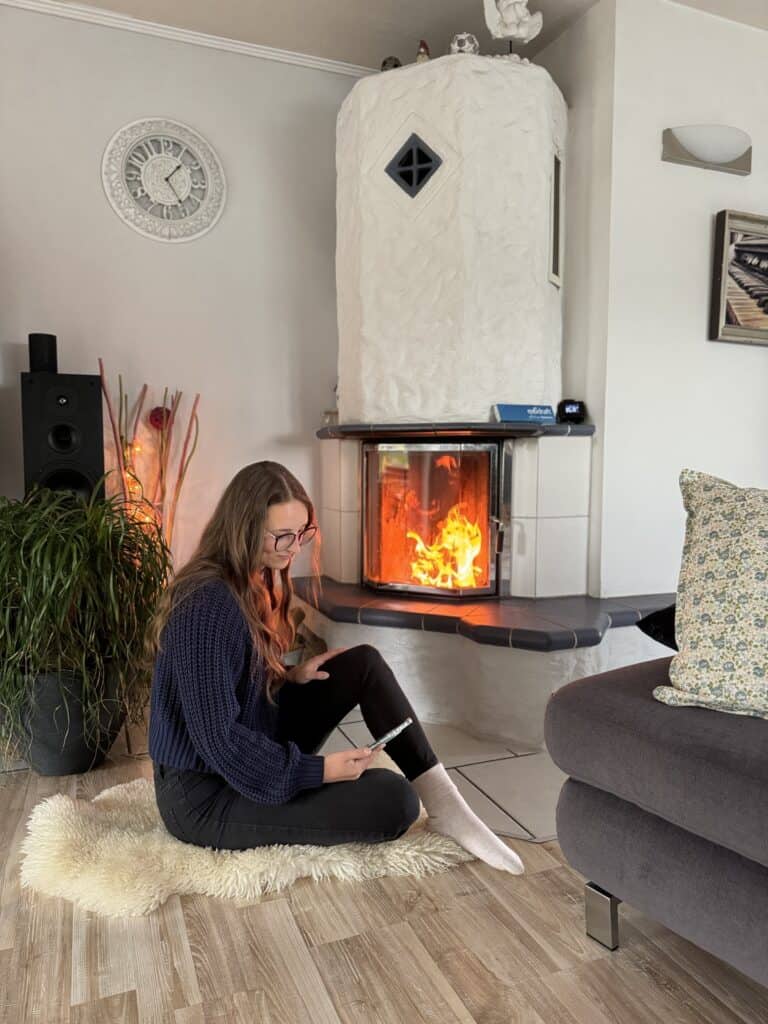
Alternatives to Removing Your Wood Burning Stove
Instead of getting rid of your wood-burning stove, modern upgrades can significantly improve efficiency, reduce emissions, and ensure compliance with new regulations. Here are the best alternatives to complete removal:
Install a Particle Filter for Cleaner Emissions
A particle filter can dramatically reduce the fine particulate matter (PM2.5) released by a stove, helping homeowners:
- Meet stricter environmental regulations, particularly in urban areas.
- Improve indoor and outdoor air quality by capturing harmful emissions.
- Future-proof their stove against possible upcoming restrictions.
Many modern particle filters can be retrofitted to existing stoves, making this an easy and cost-effective solution for homeowners who want to reduce their environmental impact.
Upgrade to an Ecodesign Stove
If your current stove is older than 10–15 years, upgrading to a newer Ecodesign model is one of the best ways to improve efficiency and lower emissions. Benefits include:
- Up to 80% fewer emissions compared to older models.
- Higher fuel efficiency, meaning less wood is needed to generate the same amount of heat.
- Compliance with current and future regulations, ensuring legal use in smoke control zones.
Improve Chimney Draft with a Chimney Fan
One of the main causes of inefficient combustion and excessive smoke is poor chimney draft. Installing a chimney fan can:
- Optimise airflow, ensuring a more complete and cleaner burn.
- Reduce soot buildup and creosote deposits, prolonging the life of the stove and chimney.
- Help prevent smoke from entering the room, improving indoor air quality.
A chimney fan is particularly beneficial for homes with low natural draft, ensuring consistent and efficient burning under all conditions.
By choosing one or more of these modern upgrades, homeowners can keep their wood-burning stove while ensuring it is cleaner, more efficient, and environmentally friendly.
Should You Replace or Upgrade?
While concerns about regulations, air quality, and environmental impact have led many to consider removing their wood-burning stove, there are smarter alternatives that allow homeowners to keep their stove while making it cleaner and more efficient.
Instead of getting rid of your stove, consider:
- Installing a particle filter to significantly reduce emissions and meet environmental standards.
- Upgrading to an Ecodesign stove, which burns more efficiently and releases fewer pollutants.
- Improving chimney draft with a chimney fan, ensuring optimal combustion and minimising smoke issues.
By investing in modern upgrades, you can continue to enjoy the warmth and charm of your wood stove while ensuring compliance with new regulations and reducing environmental impact. In most cases, upgrading is a more cost-effective and sustainable solution than complete removal.
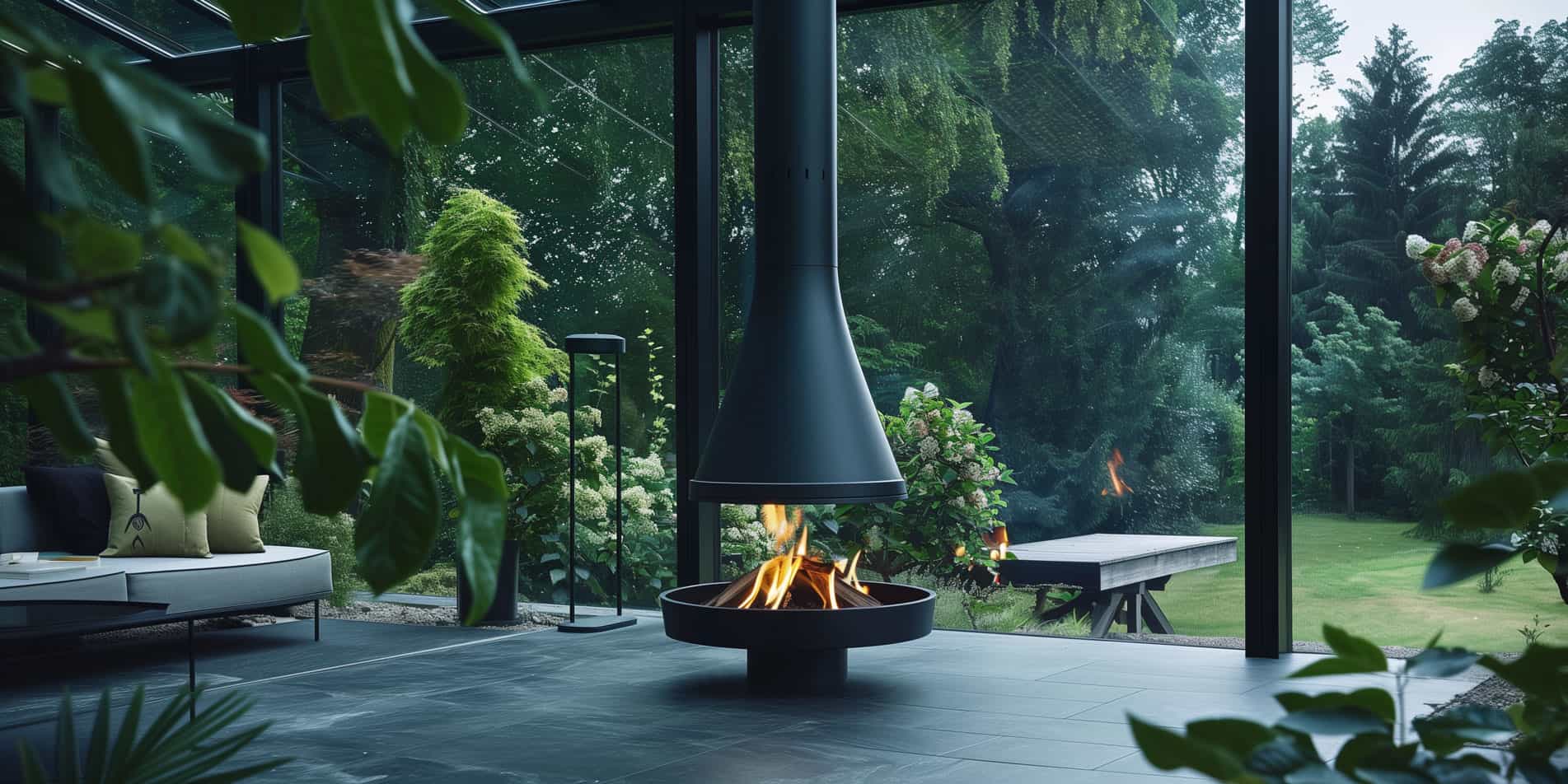
exodraft
